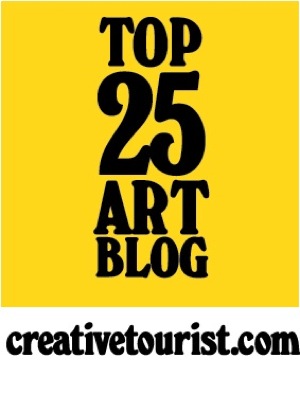 As someone who is fascinated by the relationship between the visual arts and literature, comics and graphic novels should be an obvious area of interest for me, yet strangely, until recently, they are something that I've never been particularly inspired to explore. However, I've begun to find myself increasingly intrigued by graphic novels and the way they bring together illustration, design and text to create a unique reading experience – and I’ve been educating myself with a course of Alan Moore, and lots of other classics of the genre.
As someone who is fascinated by the relationship between the visual arts and literature, comics and graphic novels should be an obvious area of interest for me, yet strangely, until recently, they are something that I've never been particularly inspired to explore. However, I've begun to find myself increasingly intrigued by graphic novels and the way they bring together illustration, design and text to create a unique reading experience – and I’ve been educating myself with a course of Alan Moore, and lots of other classics of the genre.Given this, I was keen to visit Hypercomics, a new exhibition exploring 'the shape of comics to come' curated by graphic novel expert Paul Gravett at the Pump House Gallery in Battersea Park. I also went along to hear his talk, ‘More than Words Can Say: The Future is Graphic’ exploring the different ways that comics are changing and developing into 21st century graphic literature.
I’m not really sure what exactly I expected from an exhibition of comics, but whatever it was, Hypercomics certainly wasn't it. These are comics with a difference: four artists have experimented with non-linear narratives, liberating the comic from the printed page, offering us a series of works that present us with multiple storylines and multiple perspectives. More installation art than comic book, all the works are inspired by the space of the Pump House Gallery itself, using the building and its architecture as the catalyst for a shifting story which changes depending on how we as the viewer choose to interact with and move through the spaces.
This is most obvious in ‘The Rut’, the installation created by comic artist Dave McKean, who is perhaps best-known for his collaborations with Neil Gaiman. Here, McKean presents a menacing story of an assault in Battersea Park through a combination of drawing, sculpture, photography and installation, told through the eyes of three different characters and which can be read in a multiplicity of different ways. Meanwhile, Daniel Merlin Goodbrey re-imagines the Pump House Gallery as an archive for the fictional glam-rock dictator Hieronymous Pop, documenting the life of its lone archivist in a series of Chris Ware-style panels that offer us multi-directional storylines and diverging possibilities.
Adam Dant’s work on the mezzanine level presents the most overt challenge to conventional narrative, in an installation that I found difficult to relate to any kind of traditional comic format. Here, the gallery becomes the tromp l’oeil library of a sinister character called ‘Doctor London’: the walls are covered with painted bookcases housing arcane ‘corpo-geographic’ volumes with titles such as ‘The Great Lobe of Theatreland’ and ‘Chronic Wheezing: a description of some sounds of Finsbury’, reconfiguring the city of London as a diseased body. The ground floor of the gallery was set up for the talk, so to my disappointment I didn’t have much chance to look at the fourth work in the show, Warren Pleece’s animated installation ‘Montague Terrace’, a work that allows gallery visitors to take a Rear Window-style peep into the lives of four dysfunctional tenants of the Pump House Gallery re-visioned as an apartment block.
Proving that comic books and contemporary art have more in common than I, at least, could ever have expected, Hypercomics is a vibrant and enjoyable exhibition, but also highly thought-provoking about the nature of narrative fiction. Taking the blurred boundaries between visual art and literature that already exist within the graphic novel format to a new level, this is an exhibition which experiments with ideas of immersivity and interactivity, allowing the viewer to become the author of their own unique narrative. What's more, in a world where digital publishing occupies an increasing level of our attention, this exhibition is a timely celebration of the comic as a tactile object, offering us a physical space to investigate, interact with and explore.
[Image by Warren Pleece: Detail from Montague Terrace, via Pump House Gallery]














